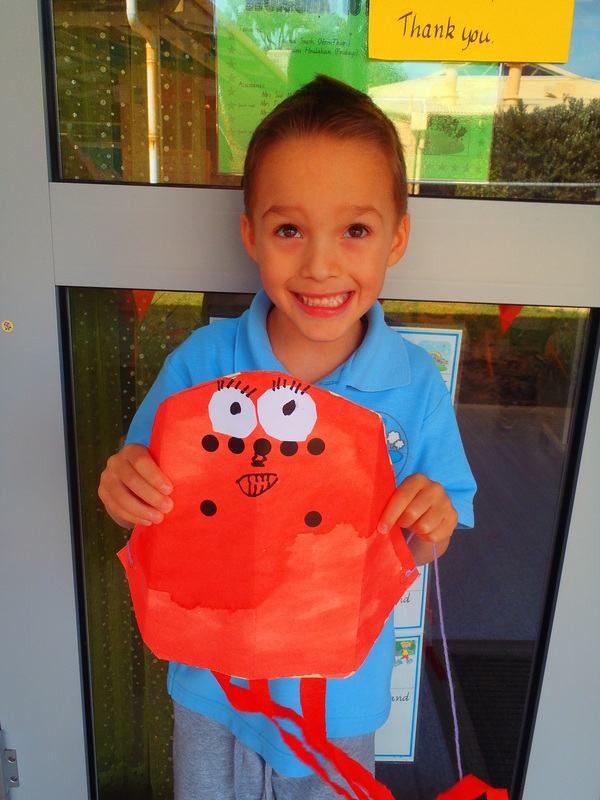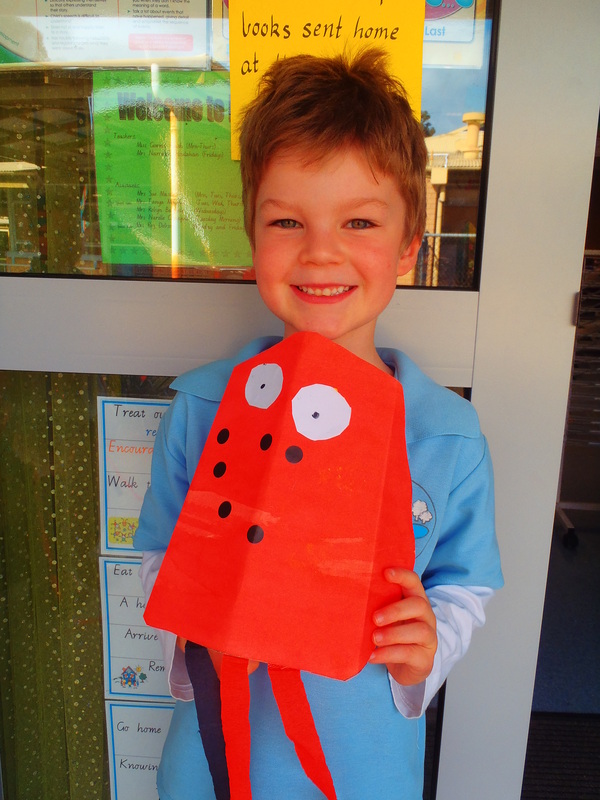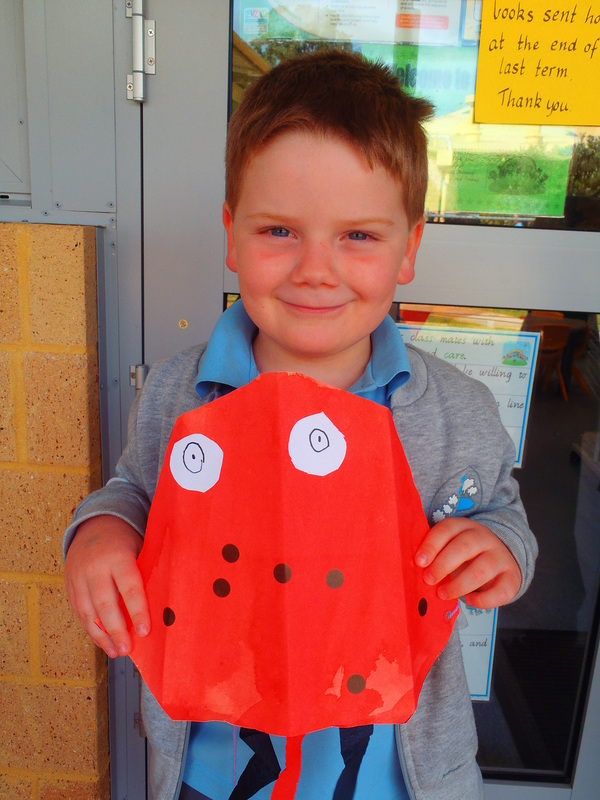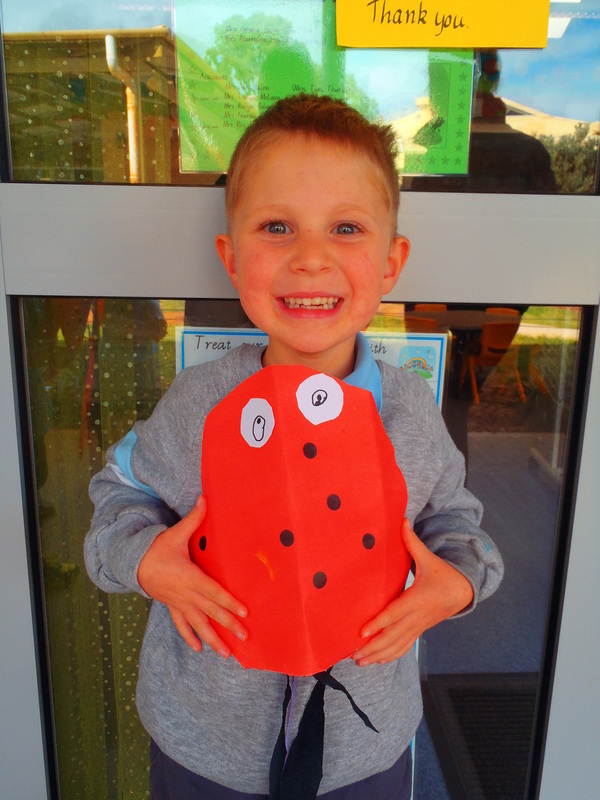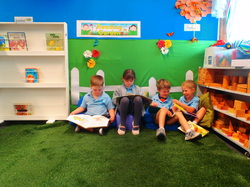
Reading in our Reading Garden.
We have been very busy continuing to explore our theme of minibeasts. So far, we have looked at bees, ladybirds, caterpillars, butterflies, spiders an earthworms. We have learnt many interesting facts about minibeasts, did you know;

Bees
Chianna: Bees have a proboscis.
Tahlia: Bees collect pollen on their legs and take it to their hive.
Liam H: Bees have wings.

Ladybugs
Anna: They have an elytra that protects their wings.
Faith: They have spots.
Paige: They eat aphids.

Spiders
Hudson: They have spinnerets to make a silk web.
Jayden Y: They have an abdomen.
Liam M: They have a thorax.
Mitchell: They have pedipalps to hold things.

Earthworms
Tyler: They breathe from their skin.
Aidan: Earthworms like to eat fruit.

Caterpillars
Giselle: They make a chrysalis to turn into a butterfly.
Ryder: They start off as an egg and then a caterpillar and they eat lots of leaves and make a chrysalis.

Butterflies
Olivia: Their wings are wet when they come out of the chrysalis and they have to wait for them to dry.
Jorja: It starts as an egg, then a caterpillar, then a chrysalis and then a butterfly.
Finn: They lay eggs and have antennas.
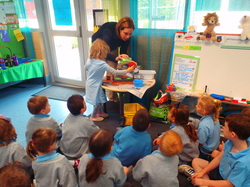
We made a worm farm with Mrs Checksfield and layered the soil so we can see the earthworms tracks.
Click on th images below to enlarge.
 Butterfly Eggs  Baby Caterpillars Our caterpillars have hatched from their eggs and begun to grow. They start out in life so small.
|  Caterpillar of the Monarch Butterfly They eat lots of leaves and grow into a larger caterpillar.
|  Making a chrysalis When they are large enough the caterpillar forms a sticky thread from its tail and hangs upside down. They thenshed their skin and use this to form a chrysalis.
 Butterfly Chrysalis | 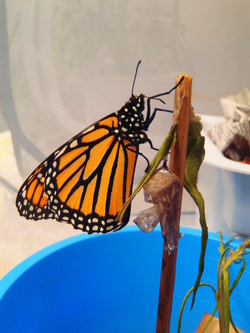 Adult Butterfly Once the butterfly is formed the chrysalis turns black and translucent. When the butterfly emerges their wings are wet and shrivelled. They must wait for the blood to fill their wings and dry out before they can fly.
| |
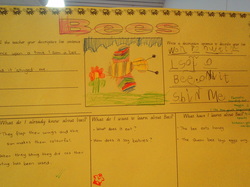
This term we are learning about Minibeasts. A minibeast is a small animal that does not have an internal skeleton. So, they need a tough exoskeleton to protect thier body. However, there are always exceptions to the rule like snails, slugs and earthworms!
In week one we looked at bees. We discussed all the thing we knew about bees and made a KWL chart. This is what we Know, Want to know and have Learnt. We made bees and a hive to hang in our room. We learnt about the body parts if a bee and why they need a hive.
We watched the video "The Magic School bus: In a Hive" The students on the video turned into bees and went inside a beehive. Did you know that bees make honey? They collect nectar from flowers using thier pollen sack. Then they place it in a chamber inside their hive and carefully stir it with their proboscis. That is thier long tongue. Then they evaporate all the water and cool down the nectar by flapping their wings. We go to taste honey and then brainstormed a list of describing words. We then sorted our words into groups of words that described honey and those that didn't.
We learnt that bees need honey to feed their young. We also learnt that bees communicate by dancing. Did you know that if a bee stings you the bee dies?
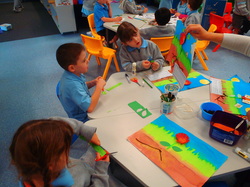
We made flowers and labelled the parts to create a diagram. First we pinted the bckground using edicol dye. We had to start on the left an sweep across our page. We used 3 different colours to make the sky, grass and soil. Then we cut snips into a patty pan to make the petal for the fower. We added a star fo the stem and card for the leaves. We sprinkled orange powder for the pollen and added wool roots. We then stuck on some bees to collect the pollen.
| |
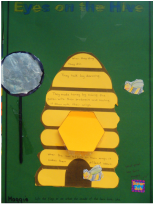
We also made beehives and added bee facts to each section. You can even lift the flap and see the honeycomb chambers inside the hive with the pretend magnifying glass!
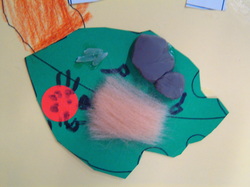
In week 2 we looked at Ladybugs. We explore thier lifecycle and learnt that a ladybug starts out as an egg. They then become a larva which attaches their tail to the under side of a leaf and becomes a pupa. When the pupa grows it turns into an adult ladybug. We created a lifecycle of a ladybug using rice for the eggs, plasticine for th larva, thick fur for the pupa and a sticky dot for the ladybug.
| 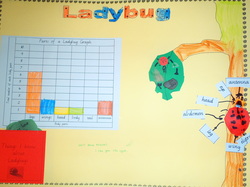 We also made a ladybug and labelled it's body parts to create a diagram. We then counted the number of each body part to create a graph. We then brainstormed facts we had learnt about ladybugs and shared them with a partner. We then added our facts to some leaves to puton our ladybug fact sheet.
| 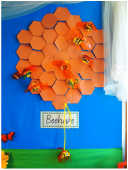
Our class beehive
|

We made our very own ladybug kites and had to add 7 spots, just like the seven spotted ladybug.























